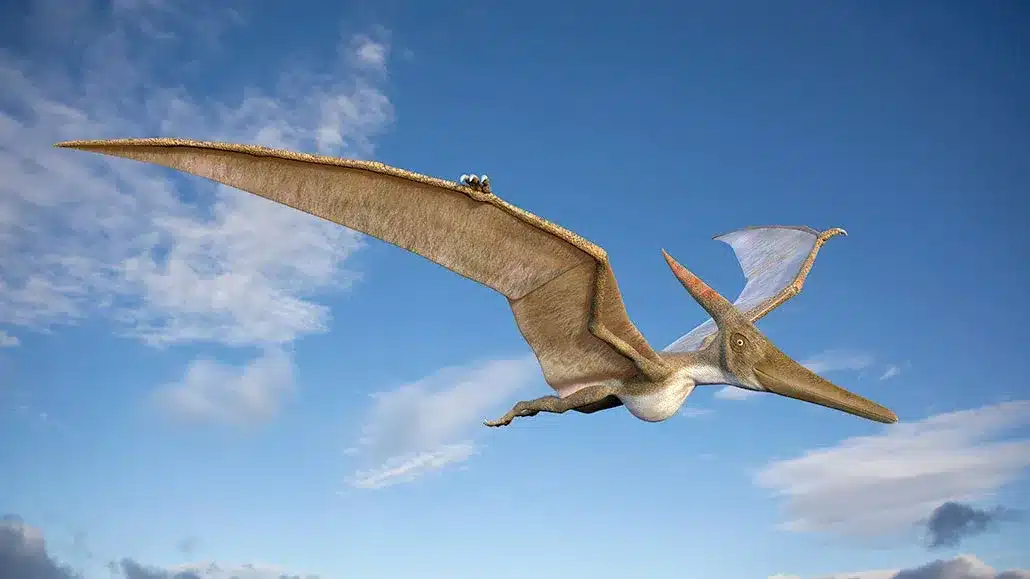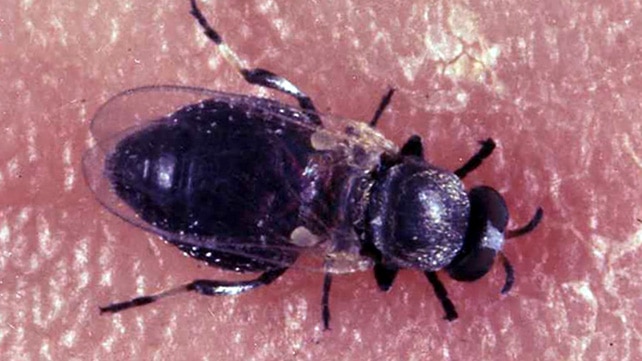About Pterosaurs:
- Pterosaurs were highly successful flying reptiles that flourished during all periods (Triassic, Jurassic, and Cretaceous) of the Mesozoic Era (252.2 million to 66 million years ago).
- Pterosaurs were not only the first reptiles capable of flight; they were also the first vertebrates to fly, a feat they accomplished by using strong forelegs to launch their bodies into the air.
- Although pterosaurs are notdinosaurs, both are archosaurs, or “ruling reptiles,” a group to which birds and crocodiles also belong.
- It included the largest vertebrate ever known to fly: the late Cretaceous Quetzalcoatlus.
- Features:
- Pterosaurs are not closely related to either birds or bats and thus provide a classic example of convergent evolution.
- Their wings were formed by a membrane of skin that was connected to the hand by an elongated fourth finger, not unlike the fleshy wings of bats.
- Earlier species had long, fully-toothed jaws and long tails, while later forms had a highly reduced tail and some lacked teeth.
- They often had long necks, which sometimes had throat pouches similar to pelicans’ for catching fish.
- The pterosaurs went extinct at the end of the Cretaceous period, around 65.5 million years ago, during the mass extinction known as the Cretaceous-Tertiary extinction event (K-T extinction event).
- When the pterosaurs disappeared, their role as the dominant vertebrates in the skies was taken over by the birds, which are considered to be of dinosaur ancestry.
Q1: What is convergent evolution?
Convergent evolution occurs when organisms that aren’t closely related evolve similar features or behaviors, often as solutions to the same problems. The process can result in matching body shapes, color patterns or abilities.
Last updated on November, 2025
→ Check out the latest UPSC Syllabus 2026 here.
→ Join Vajiram & Ravi’s Interview Guidance Programme for expert help to crack your final UPSC stage.
→ UPSC Mains Result 2025 is now out.
→ UPSC Notification 2026 is scheduled to be released on January 14, 2026.
→ UPSC Calendar 2026 is released on 15th May, 2025.
→ The UPSC Vacancy 2025 were released 1129, out of which 979 were for UPSC CSE and remaining 150 are for UPSC IFoS.
→ UPSC Prelims 2026 will be conducted on 24th May, 2026 & UPSC Mains 2026 will be conducted on 21st August 2026.
→ The UPSC Selection Process is of 3 stages-Prelims, Mains and Interview.
→ UPSC Result 2024 is released with latest UPSC Marksheet 2024. Check Now!
→ UPSC Prelims Result 2025 is out now for the CSE held on 25 May 2025.
→ UPSC Toppers List 2024 is released now. Shakti Dubey is UPSC AIR 1 2024 Topper.
→ UPSC Prelims Question Paper 2025 and Unofficial Prelims Answer Key 2025 are available now.
→ UPSC Mains Question Paper 2025 is out for Essay, GS 1, 2, 3 & GS 4.
→ UPSC Mains Indian Language Question Paper 2025 is now out.
→ UPSC Mains Optional Question Paper 2025 is now out.
→ Also check Best IAS Coaching in Delhi

















